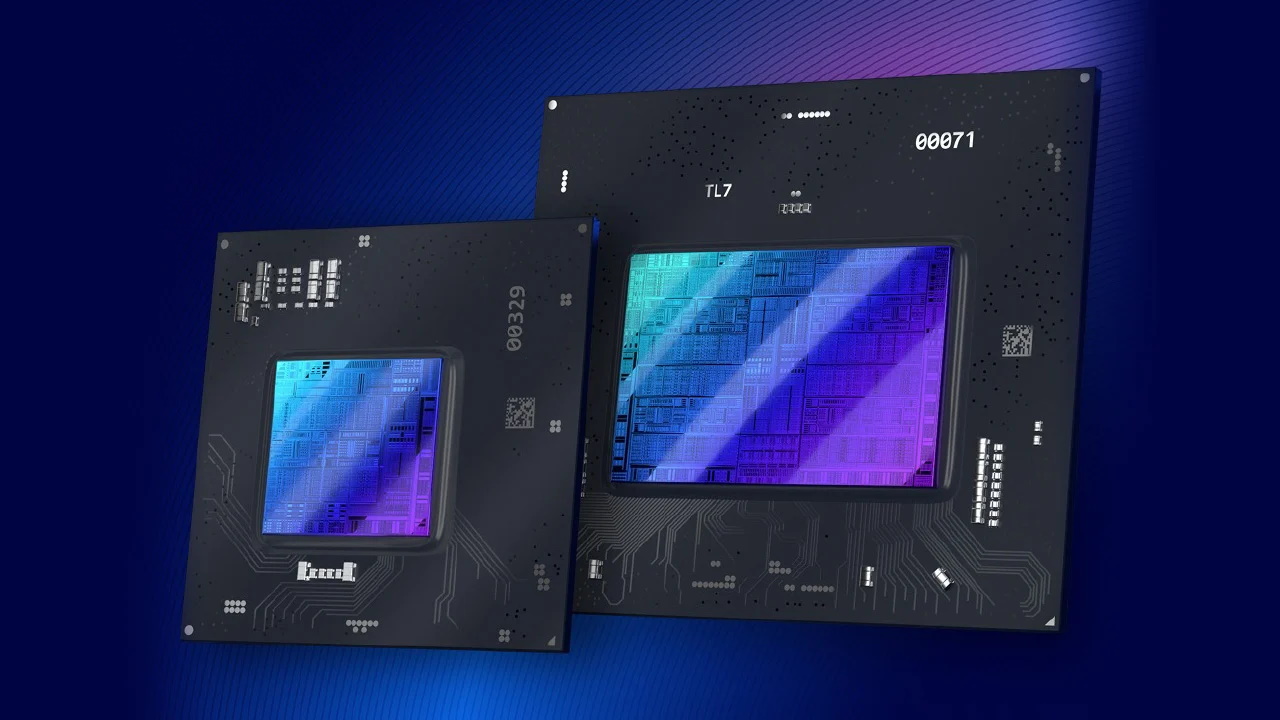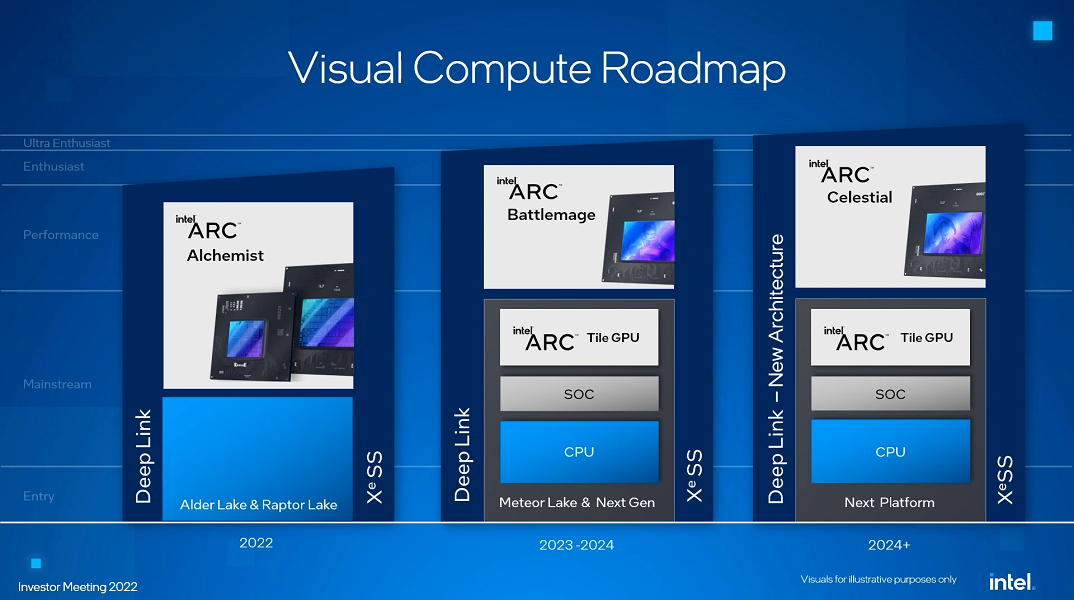Intel rumoured to be scaling back its next-gen Battlemage GPU
Is the RTX 4080 no longer the target?

Let's start with a fact. Intel's next-gen graphics architecture is codenamed Battlemage. Beyond that it's all speculation, but the latest fuel on the bonfire of rumours suggests that Intel is scaling back its ambitions with Battlemage. If the latest scuttlebutt is to be believed, Battlemage will actually have fewer execution units than Intel existing top graphics card, the Intel Arc A770.
The new info comes from YouTube channel Moore's Law is Dead, which has a hit-and-miss record when it comes to rumours and previously claimed that the entire Intel Arc graphics project had been cancelled. MLID has revised that prediction and now claims Arc is "effectively cancelled" but that at least one Battlemage GPU will be released.
According to MLID, up to three GPU SKUs for Battlemage are currently planned. But the really conspicuous aspect is that the most powerful "G10" Battlemage GPU is said to have been scaled back to just 448 execution units or EUs. That's fewer than the 512 EUs of the Intel Arc A770 GPU, the fastest of the current Alchemist line of graphics chips.
MLID also claims that the G10 GPU is pretty compact by the standards of AMD and Nvidia graphics chips. At 362mm2. That's smaller than the Arc A770's 406mm2 die and far smaller than, for instance, the AD102 chip in the Nvidia RTX 4090 which measures 609mm2.
However, it's around the same size as the AD103 GPU in the RTX 4080, which measures 379mm2. Intel's G10 is also said to be built on the same 4nm TSMC process technology as the Nvidia's RTX 40 family.

What to make of it all is hard to say. Most existing rumours around Battlemage have claimed that it will slot in around RTX 4080 levels of performance and probably go on sale around summer 2024.
That's hard to square with a GPU with fewer execution units than Arc A770, which has performance on par with an RTX 3060 Ti at best. Of course, those EUs may be highly modified for Battlemage versus Alchemist, making a direct comparison tricky.
Keep up to date with the most important stories and the best deals, as picked by the PC Gamer team.

Best CPU for gaming: The top chips from Intel and AMD
Best gaming motherboard: The right boards
Best graphics card: Your perfect pixel-pusher awaits
Best SSD for gaming: Get into the game ahead of the rest
But if the die size quoted by MLID is accurate, Intel will have to had made major advances in GPU efficiency to end up with a GPU slightly smaller than the RTX 4080's but still competitive with it on performance.
It's worth remembering that rumours around the Arc A770 before it launched last year suggested it would fall somewhere between the RTX 3070 and RTX 3080. In reality, it was a fair bit slower than that, especially at launch with some pretty patchy drivers.
Likewise, there were some very ambitious notions of doubling performance over previous generations for both Nvidia RTX 40-series and AMD's RX 7000 GPUs coming out of rumour channels like MLID before those graphics cards arrived. And the reality wasn't anything even close to that. The new RTX 4060 is at best 20% faster for raster versus the old RTX 3060, even according to best-case-scenario numbers from Nvidia itself.
But for what it's worth, we really hope Intel can produce a GPU next year with performance to match the RTX 4080. Because that would inject some desperately needed competition into the graphics market.

Jeremy has been writing about technology and PCs since the 90nm Netburst era (Google it!) and enjoys nothing more than a serious dissertation on the finer points of monitor input lag and overshoot followed by a forensic examination of advanced lithography. Or maybe he just likes machines that go “ping!” He also has a thing for tennis and cars.

